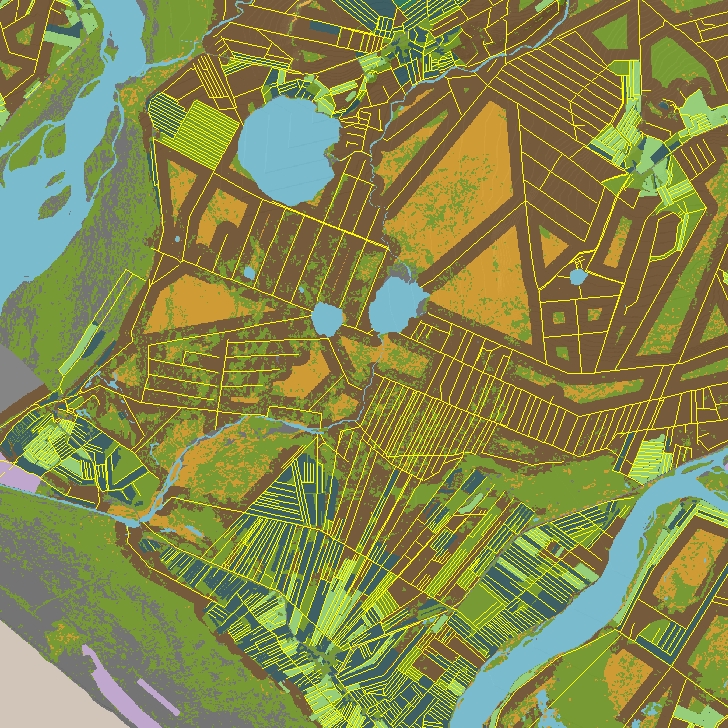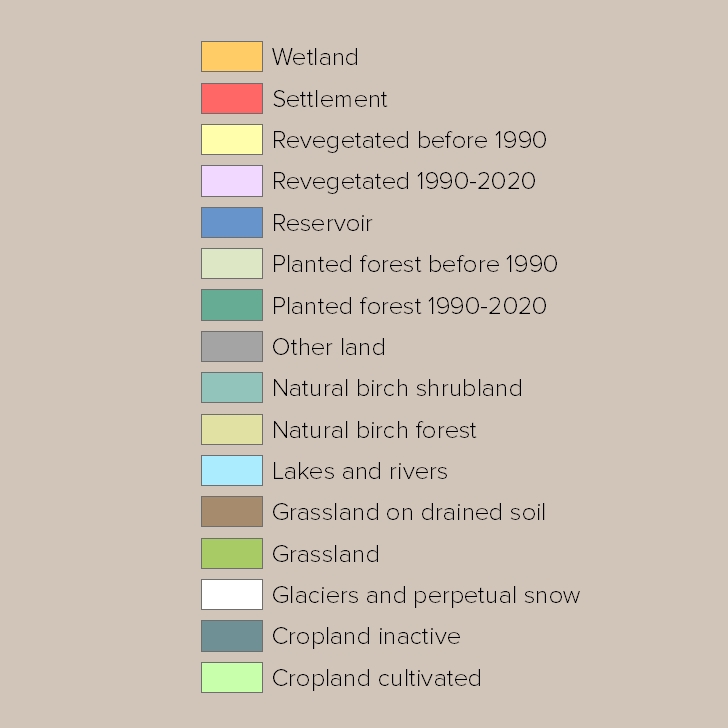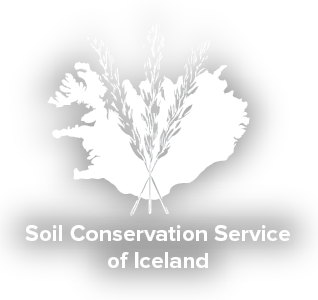
It is estimated that 47% of all Icelandic peatlands are impacted by drainage and approximately 70% of the lowland peatlands.
About 15 % of the drained peatlands are used for hay-making and some are used for grazing. However, a large proportion of the drained land, the drainage now has no practical purpose.
The Agricultural University of Iceland has logged the coordinates of existing ditches in Iceland two separate times, in 2008 and 2020. According to that work the combined length of the ditches is 33.000 km. Accurate maps of the ditch network are the premise for evaluating the extent of the drained areas.
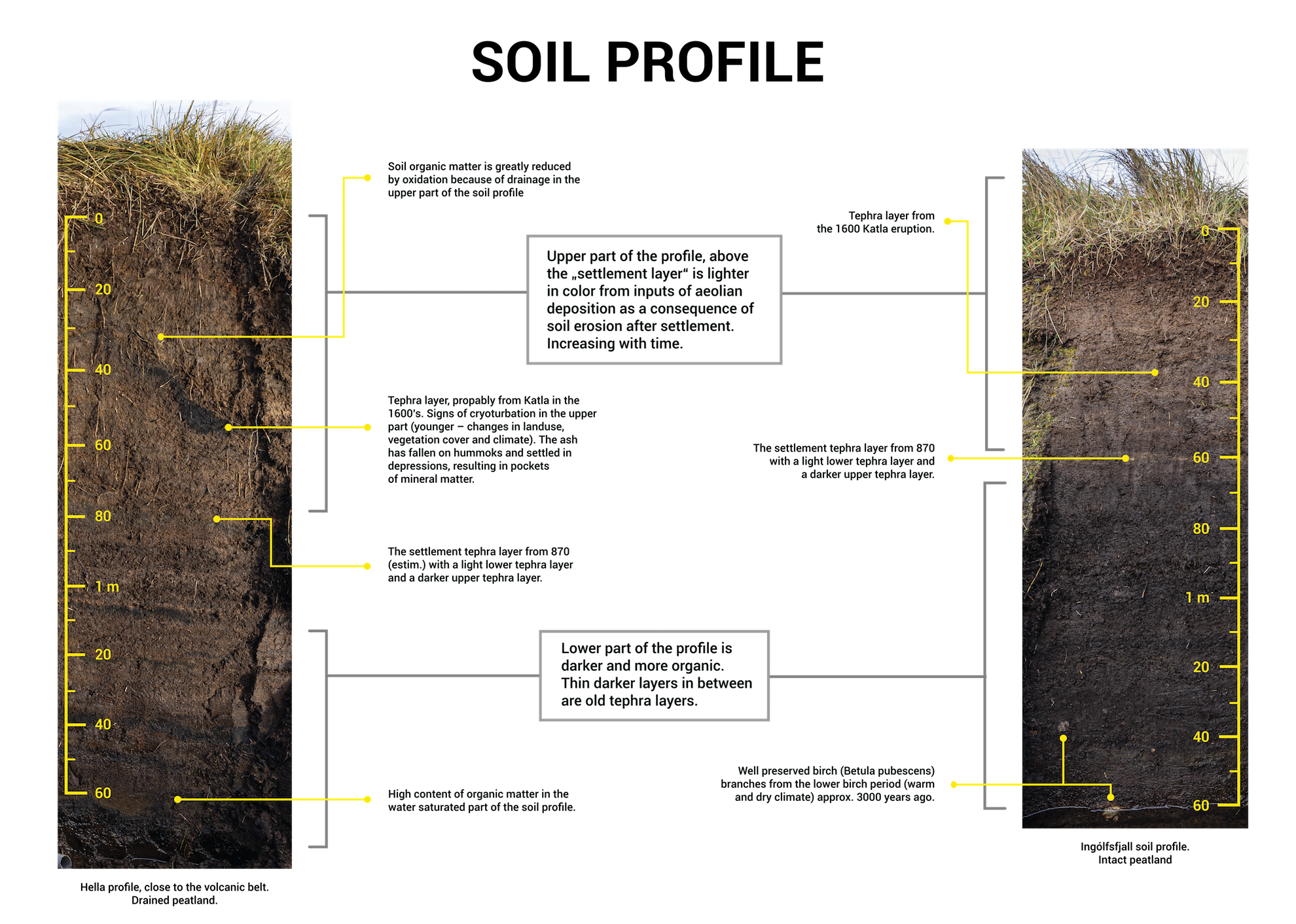

Icelandic peatlands cover about 8660 km² constituting about 15% of the vegetated surface of the island.
Vegetation
The overarching characteristic of the peatlands vegetation is the predominance of vascular plants and virtual absence of Sphagnum moss dominant peatlands.
The peatlands are species poor but are habitat to red listed and protected species. Common species are various Carix spp., Equisetum spp., cotton grass and some heathland species.
SOILS
Icelandic peatlands are strongly influenced by the volcanic nature of the island. They receive regular tephra inputs and intense aeolian deposition caused by centuries of soil erosion of dryland areas. This makes the peatlands high in mineral content, fertile, with a high pH and favourable nutrient availability.
Soil carbon is often less than 25% in the upper layers but higher further down the profile. Although the carbon concentration is low the stock is high as the mineral matter is typically additional to the organic matter.
BIRDS
Icelandic peatlands are in general particularly important for birds. They support many internationally significant bird species and are especially important for waders in the northern hemisphere. They have high breeding density, often 10 times higher than for the same species in the UK.
The intensive drainage during the 20th century, along with the introduction of the American mink led to local extinction of the water rail in Iceland.
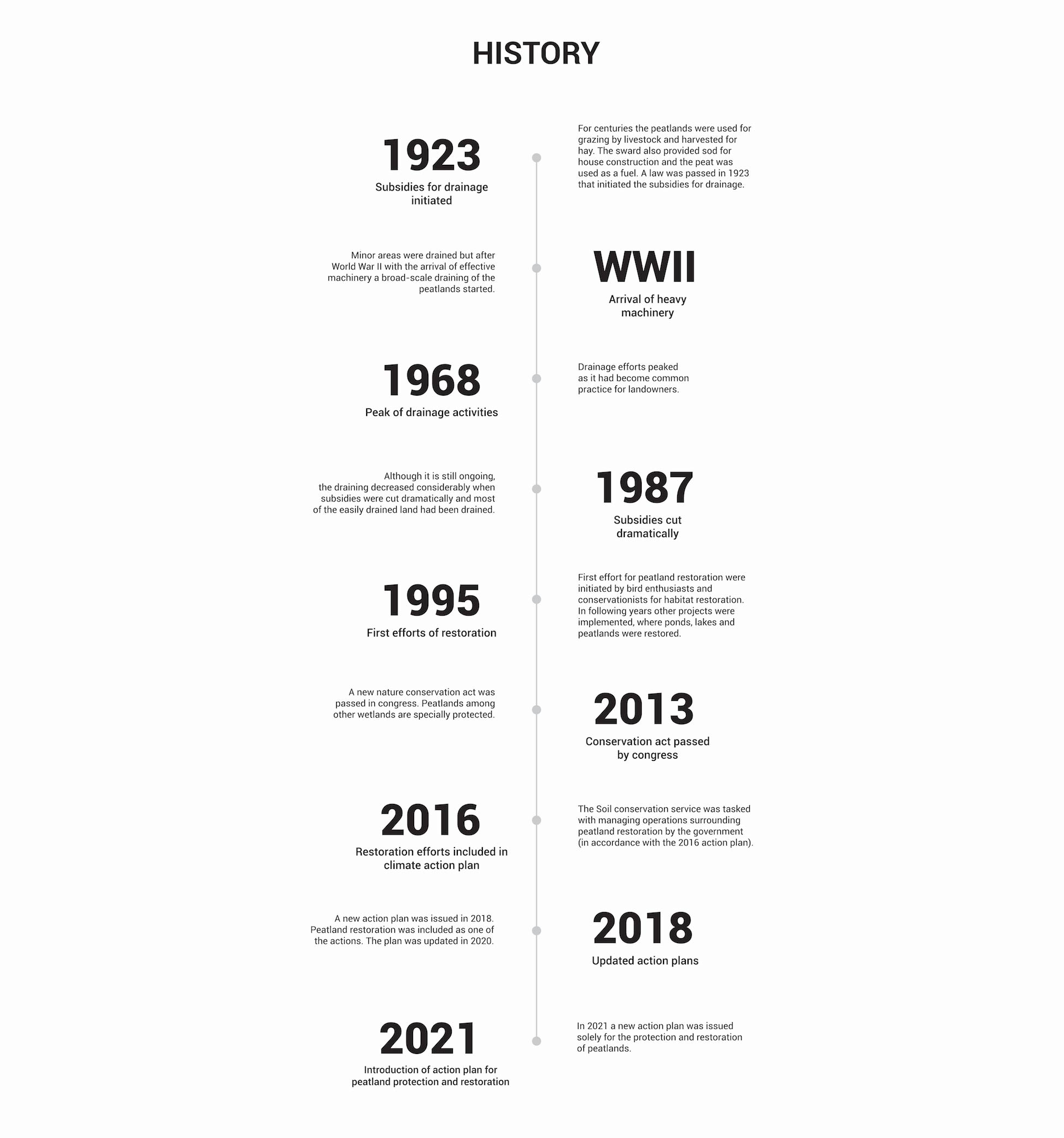

Although intact peatlands are protected by Icelandic nature protection laws some disturbance is still ongoing. Further drainage of peatlands with low impact drainage is also common. It is important to increase the level of protection of all peatlands in Iceland.

Subsidy structures, laws and regulations do not address peatland conservation and restoration properly. Wetlands and peatlands are still largely seen as wastelands by the public and landowners.

Iceland still has vast areas of intact natural peatlands that have an important role in biodiversity and carbon budgets. Majority of drained peatland in Iceland is recently drained and the disturbance is not intensive. Restoration of this land is therefore relatively simple to implement, and previous function and characteristics of the peatlands can be restored.

